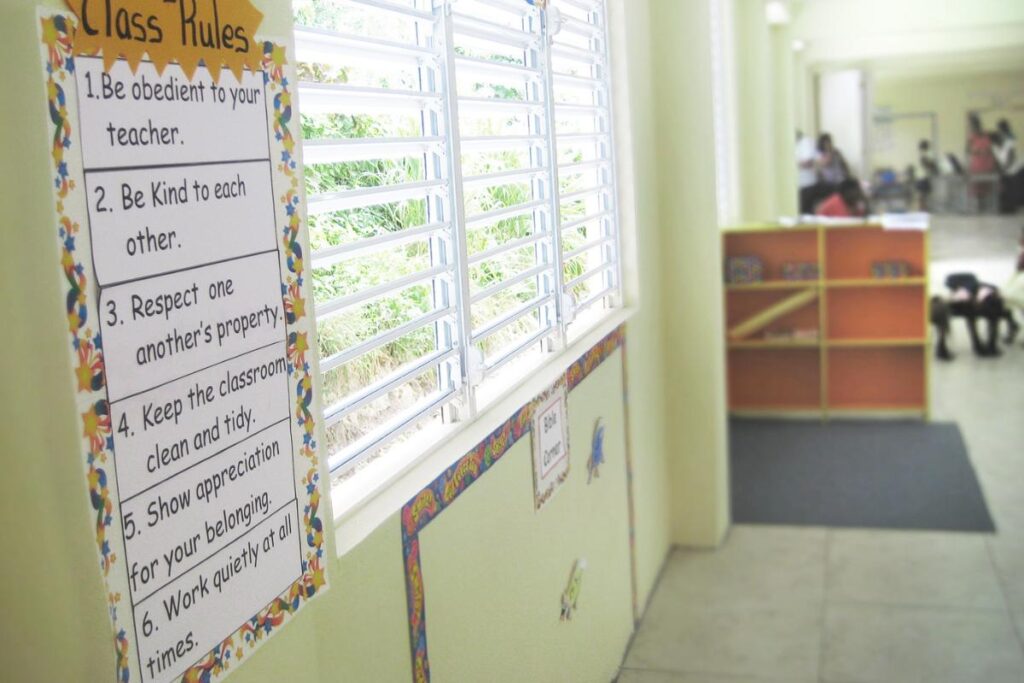5 Fun Ways to Set Classroom Rules Through Games
It’s really important for students to feel like they are a part of making the classroom rules. When they help make the rules, they understand them better and are more likely to follow them every day. This helps make the classroom a nice place for everyone to learn. Starting from the first days of school, or even later in the year, there are some fun activities you can do to teach these rules. Let’s take a look at some of these activities that can help everyone learn and remember the classroom rules.

1. Classroom Contracts
Imagine everyone in the class coming together to make a big promise about how you’ll all behave. This is what “Making Our Class Promise” is all about. You and your students discuss what rules are important for the classroom. Think about things like raising hands to speak, respecting each other, and keeping the room tidy. Write these rules down on a large poster. Each student, including you, can sign this poster. It’s like making a team agreement. Having this visible in the classroom reminds everyone of the promise they made. It’s special because it’s not just you telling them the rules; they’re part of making them. This makes students feel responsible and more likely to follow the rules because they helped create them.
2. Classroom Scavenger Hunts
“Discover Our Classroom” is like a treasure hunt, but instead of looking for treasure, students are finding important places and items in the classroom. You prepare a list of things to find, like the bookshelf, the first-aid kit, or where to hand in homework. You can make it even more fun by giving clues or riddles for each item. For example, “I’m full of stories, but I don’t talk. Where am I?” for the bookshelf. This game is exciting for students and helps them feel more at home in their classroom. They learn where everything is, which makes it easier for them to follow procedures, like where to find supplies or put away their work.
3. Roleplays
In “Act It Out,” students get to be actors for a little while. You create scenarios that might happen in the classroom, like what to do if someone else is talking while the teacher is talking or how to ask for help. Students then act out these situations. They show both good and bad ways to handle them. For example, show both interrupting and raising a hand to speak. This activity is a fun way for students to really understand the rules. It’s one thing to hear about a rule, but acting it out makes it clearer and easier to remember. Plus, it’s a chance for students to get up and move around, which always makes learning more fun.
4. Cash Bus (Cah Cab)

“Cash Bus” is a quiz game based on the TV show Cash Cab where you turn learning the rules into a quiz show. You can ask questions about the classroom rules and procedures. For example, “What should you do if you finish your work early?” or “Where do we put our scissors after using them?” Students can answer individually, or you can make teams for a bit of friendly competition. You can even have small prizes or rewards for correct answers. This game is great because it makes learning about rules fun and engaging. Students are more likely to remember the rules when they’re part of a game. Plus, it’s an opportunity for students to see what they already know and what they need to learn more about.
5. New Rule Challenges
Finally, there’s the “Initiate a New Rule Challenge.” This is where you encourage students to come up with their own rules. Maybe there’s something they think is important that hasn’t been covered yet. They can propose new rules to the class, and everyone can discuss and vote on whether to add them to your class promise. This activity is powerful because it gives students a voice. It makes them feel like their opinions and ideas are valued. It’s also a great way to spot issues you might not have thought of. By involving students in the rule-making process, they’re more invested in following the rules, and it builds a stronger, more respectful classroom community.

